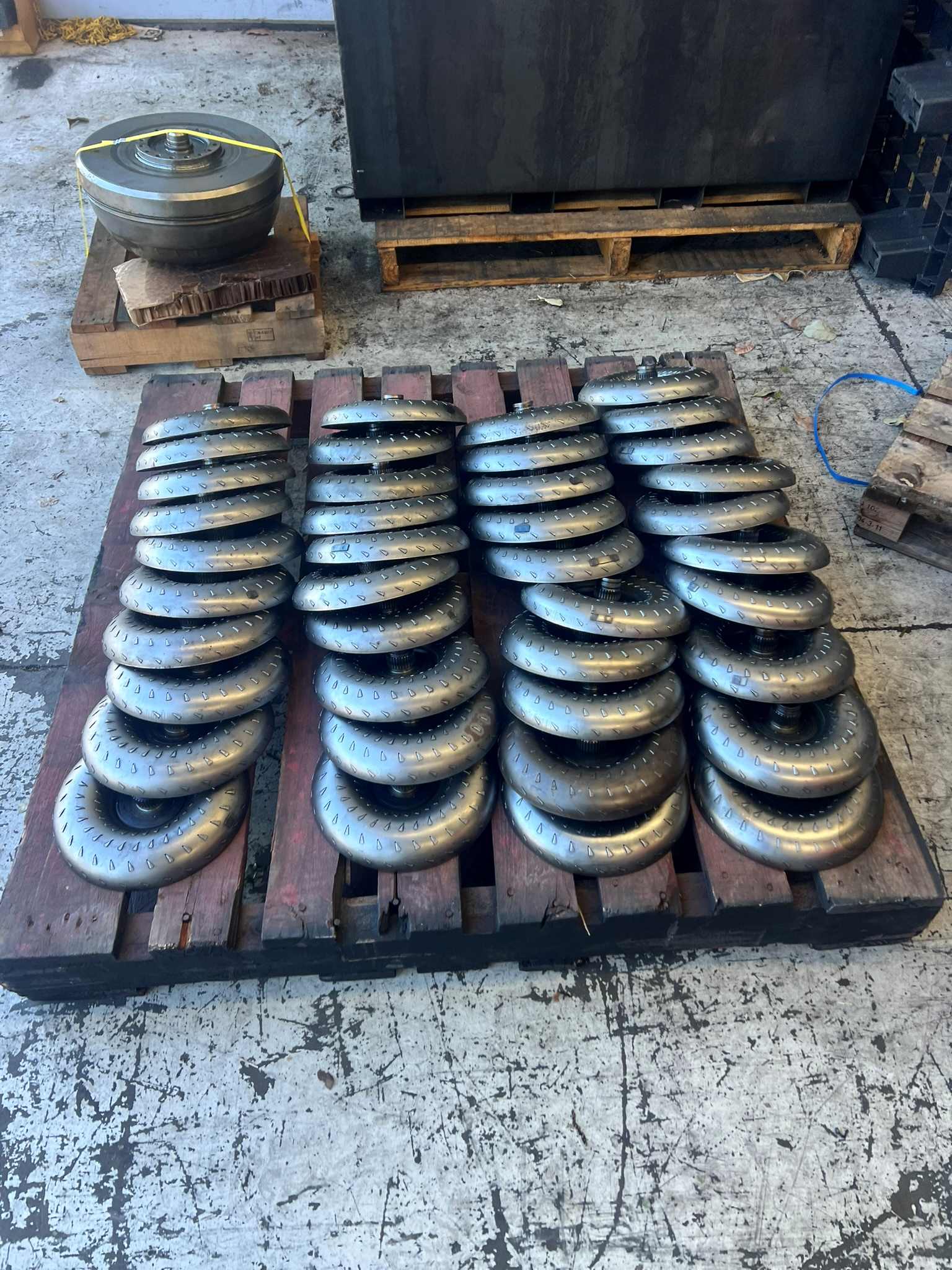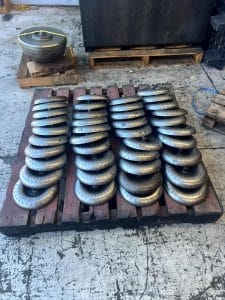Signs of Torque Converter Shudder

Signs of Torque Converter Shudder
This article is designed to explain “How to Spot the Early Signs of Torque Converter Shudder”.
If you’ve spent any time driving up the Toowoomba Range with a caravan behind you, or cruising the Bruce with a tray full of gear, you’ll know your ute has to work hard. But what you might not know is that the faint, buzz-like vibration you’re starting to feel at 80 km/h could be your torque converter quietly putting its hand up and saying, “Mate, I’m not happy.” That’s torque converter shudder — and in Queensland, with our long hills, heavy towing habits, and love for GVM upgrades, it’s a frequent visitor to the workshop.
Torque converter shudder is one of those issues that starts off subtle and ends up costing thousands if ignored. Catching it early means the difference between a simple service or upgrade and a full-blown transmission rebuild. So let’s walk through what it is, how it feels, and what to do about it before your gearbox throws in the towel.
What “Shudder” Really Is
Under normal conditions, your torque converter works like a fluid handshake between your engine and your automatic transmission. At cruising speeds, the lock-up clutch inside the converter engages to give a direct mechanical link, improving efficiency and reducing heat. When everything’s healthy, you never notice it happening.
Shudder creeps in when that lock-up clutch starts slipping microscopically. The friction material begins to glaze, the fluid film isn’t behaving the way it should, and every time the clutch tries to bite, you get a fine, rapid vibration through the driveline. It’s not violent enough to rattle your teeth, but it’s enough that your right foot says, “Hang on… that wasn’t there before.”
Unlike a tyre out of balance or a bent tailshaft, converter shudder is tied to throttle position and load, not just road speed. That’s one of the keys to spotting it early.
The Classic Symptom Pattern of Signs of Torque Converter Shudder
Most Queensland owners first notice it between about 60 and 90 km/h. At steady throttle on flat, or gently rolling roads. It’s often worse when the transmission is fully warmed up and you’re climbing a gentle hill or holding a light load. Some describe it as feeling like driving over a very fine set of corrugations or rumble strips that magically vanish when you press the accelerator a little harder.
If you nudge the throttle by just a few percent and the vibration disappears instantly, then returns as you settle back to cruise, you’re in shudder territory. On the flip side, if the vibration stays regardless of what your foot’s doing, you might be chasing something else — more on that in a minute.
Why Queensland Sees So Much of It Torque Converter Shudder
Our driving conditions are a perfect storm for torque converter stress. Long-distance towing in summer heat, GVM upgrades that leave utes and wagons heavier all the time. Oh yes, and a love for performance tunes that squeeze more torque out of diesel engines all push converters beyond what the factory had in mind.
Throw in a few climbs up Cunningham’s Gap or the Gillies Range, and you’ve got prolonged periods where the lock-up clutch is being asked to hold big torque at high fluid temperatures. Over time, the clutch material can’t keep its bite, and shudder becomes your new passenger.
Simple At-Home Checks for Torque Converter Shudder
If you suspect shudder, there are a couple of safe, tell-tale checks you can do without spanners. On a quiet stretch of road, bring the vehicle to the speed where you feel the vibration — say 75 km/h. Hold it steady for a few seconds. Now, lightly press the throttle just enough to get a small acceleration. If the shudder disappears and then comes back when you return to cruise, that’s a big clue. Another check is to very lightly touch the brake pedal — just enough to make the brake lights come on without actually slowing down. This usually tells the transmission to unlock the converter; if the vibration vanishes instantly, you’re looking at a torque converter issue.
These aren’t perfect tests, but they can help you rule out chasing the wrong fault. And no, dumping in a bottle of “miracle transmission shudder fix” from the servo doesn’t count as diagnosis — that’s just kicking the can down the road.
What It’s Not
Shudder can be mistaken for a few other driveline gremlins. A misfiring engine will give you a jerky, uneven feel under load at almost any speed, not just in a narrow band. Wheel balance problems show up at the same speeds whether you’re on throttle, coasting, or braking. A worn tailshaft uni joint tends to cause vibration that increases steadily with speed, rather than coming and going with lock-up. Knowing these differences can save you from paying for the wrong repairs.
Why Early Action Matters
Left alone, converter shudder doesn’t just stay the same — it escalates. The constant micro-slip creates heat that breaks down the friction lining even faster. Eventually, that material starts to shed into the transmission fluid. Then contaminates the valve body, clogging filters, and accelerating wear throughout the gearbox. What could have been solved with a targeted converter upgrade and cooler install can turn into a full rebuild costing well over eight grand.
In one recent case, a GVM-upgraded Hi Lux came to us after the owner noticed a mild vibration for six months but ignored it. By the time it arrived in our workshop, the lock-up clutch was worn to the rivets. The fluid was full of debris, and the transmission needed a complete teardown. Had we seen it earlier, we could have fixed it in two days with a Redorq TQ+ converter, high-capacity cooler, and a fluid flush — for less than half the cost.
The Fix That Actually Works
At Brisbane Tuning & Turbo, we don’t guess. We replicate the shudder under controlled load on a road test or our dyno run. We log transmission temperatures, monitor commanded vs actual lock-up clutch slip, and inspect the fluid for contamination and debris. From there, we match the fix to the severity.
If it’s caught early enough, a fluid and filter service combined with a lock-up pressure calibration can sometimes add years to the vehicle’s life. However, if the clutch material is compromised, the real solution is a converter rebuild. Alternatively, a rebuild with a heavy-duty converter or even a billet converter upgrade. Keep in mind they all fail eventually, and this is why this type of decision is case by case. Ideally, rebuilds and upgrades should be matched with a larger external cooler. Our Redorq TQ+ converters, for example, are designed for Queensland’s towing reality. It has a larger clutch surface, stronger internals, and precision machining so they hold lock-up under sustained load without shudder. Pair that with better cooling, and you’ve not only stopped the shudder, you’ve future-proofed your transmission for years ahead.
Platform-Specific Notes
HiLux, Prado, and Fortuner with the AC60F are notorious for developing shudder after a GVM upgrade and a bit of towing — often between 70 and 85 km/h. Our TQ+ converter and cooler package is a proven cure.
Ranger and Everest with the 6R80 often start shuddering after a tune or heavy towing, especially in hot weather. HD converter and transmission recalibration is the ticket here.
Holden and LS builds running the 6L80 can see shudder even in performance street cars — and it’s magnified with high-stall converters unless you go billet.
Land Cruiser 200 with the AB60F or A750F is less prone in stock form but suffers badly once towing at full GVM in the heat. A billet converter is the safe choice.
Patrol RE5R05A tends to start early if it’s behind a ZD30 that’s been tuned for towing. Single turbo conversion plus HD converter is a strong combo.
Torque Converter Shudder FAQs
Can shudder go away on its own?
No. It might be less noticeable when cold or after a fluid change, but the underlying wear won’t reverse itself.
Will a fluid change fix it?
If it’s caught at the earliest stage, fresh fluid can help. If the clutch lining is damaged, it won’t cure the shudder.
Is it safe to keep driving?
You can, but you’re gambling. Every trip risks turning a converter swap into a full rebuild.
Does tuning cause or cure shudder?
A poorly calibrated tune can make it worse by commanding lock-up at the wrong time. A good tune can help by increasing lock-up pressure.
Do I need a billet converter?
Only for extreme 4WD or towing, high torque, or performance builds. Most GVM and towing setups are well served by a heavy-duty unit. Read this page about Torque Converter Upgrades to learn more.
How long does the job take?
Typically, four days, including cooler fitment and testing.
What does it cost?
From around $2,400 for Heavy Duty converter and cooler in most utes. Billet options are more.
Take Action Before It Gets Expensive
If you’re feeling that fine vibration creeping in at highway speeds, don’t wait for it to get worse. Book a Transmission Health Check with Brisbane Tuning & Turbo and let us test it properly before the damage spreads. We’re set up to handle Queensland’s toughest towing and GVM conditions. We’ll match the right solution to your vehicle and how you use it.
Read our Complete Guide to Torque Converter Upgrades for Towing and Performance
Explore the Redorq TQ+ Products